
What you need to know about liquid glass for a car
Content
- What is liquid glass?
- Scope of liquid glass
- Liquid Glass Functions
- Types of liquid glass
- Manufacturers Tour
- How to apply liquid glass to a car?
- How much does it cost to cover a car with liquid glass
- Self-applying liquid glass on the machine
- Liquid glass for cars: disadvantages and advantages
- Questions and answers:
During the operation of the car, microscopic scratches inevitably form on the paintwork. The reason for this may be different factors - improper washing, bushes, small pebbles flying from under the wheels of a vehicle passing by, etc.
To maintain the familiar shine, cars are polished. Today, among the auto chemical goods, you can find many tools that can eliminate small scuffs or restore the freshness of the paint. Among them - originally a Japanese development, dubbed "liquid glass" (sometimes autoceramics).
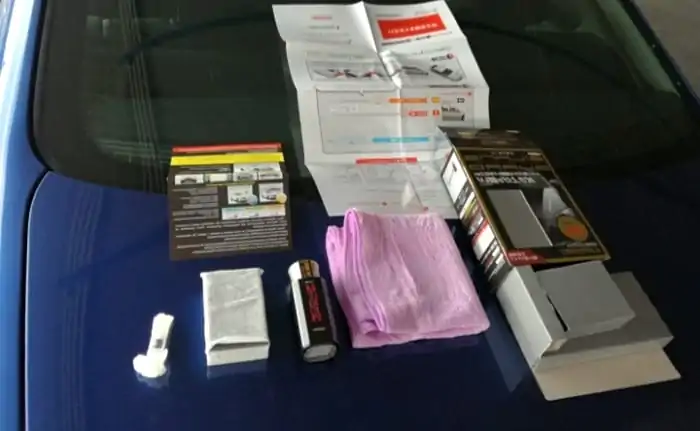
Consider what this liquid is, what effect it has on the car body, how to work with it correctly. Also pay attention to the advantages and disadvantages of the tool.
What is liquid glass?
Liquid glass is a flowable agent that contains various compounds of polymers of silicon dioxide, titanium and aluminum oxide, an alkaline compound of sodium and potassium, and silicone. Each type of polish has its own unique composition.
To ensure that the product is firmly fixed on a glossy surface, it also includes various active substances or nanoparticles, which at the molecular level react with the paintwork and are firmly fixed on its surface.
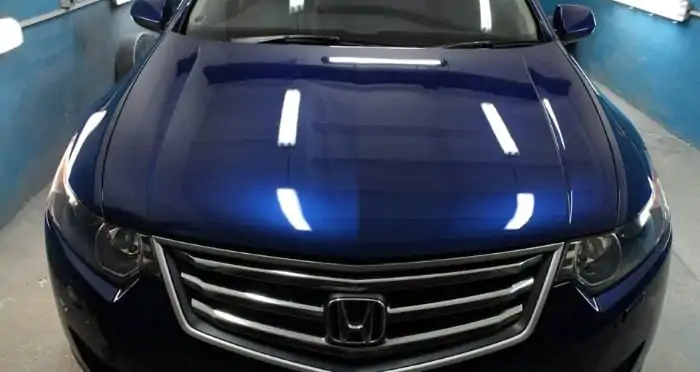
Due to its special composition, the initial structure of the solution is liquid, but when it comes in contact with air, it changes, forming a thin dense film. Manufacturers add additional additives to the chemical formula of the product, which affect the characteristics of the coating (moisture-resistant, withstands high temperatures or is resistant to minor mechanical damage).
It is worth noting that a substance with a similar chemical composition has only recently been used as a coating for automobiles, but in other areas it has been used for quite some time.
Scope of liquid glass
In addition to polishing for a car body, liquid glass (with various variations in chemical composition) is used in such areas:
- Engineering. In this industrial field, the substance is used to make a foundry mixture.
- The paper industry uses cellulose fluid.
- In construction, it is added to mortars to create acid-resistant concrete.
- Chemical industry. In this industry, the substance is used more widely. It is found in many detergents and cleaning products. It is also added to the paint material to give the finish a shine.
So that the substance can be used as a polish, its composition is slightly changed. From his formula, elements that can adversely affect the upper layer of LCP are eliminated. In this field of application, it is not liquid glass in its pure form. It is so called to identify among other car body care products.
Liquid Glass Functions
This substance is made in such a way that after drying it creates a transparent film, which protects against contact of the treated surface with moisture and air. Especially useful this property was for metal products.
With prolonged contact with moisture and oxygen contained in the air, an oxidative reaction appears. It gradually destroys metal, due to which the car can quickly lose its presentability.
Liquid glass is one of the cosmetics used for polishing cars. Classic polishes are most often based on wax. They are used in order to return the car to its former shine and freshness.

Most classic cosmetics in this category have a short result - just a couple of sinks, the wax is washed off (the use of shampoos and rags destroy the film) and the body loses its protective layer. Because of this, it is necessary to polish the body often.
Liquid glass has a similar effect - it creates an invisible film on the treated surface. It eliminates scuffs, since a transparent composition fills all micro-scratches, and the car looks like from the passenger compartment. Compared to conventional polishing agents, it has a longer duration. Using it, the car owner will make his vehicle more presentable, regardless of its generation and class.
Some manufacturers guarantee that the car will maintain its luster for two years. In fact, it all depends on the number of sinks and how this procedure is carried out (some do not wash off the dust from the machine, but immediately try to wipe it with a soaped rag). Despite this, the tool still retains protection for a long period.
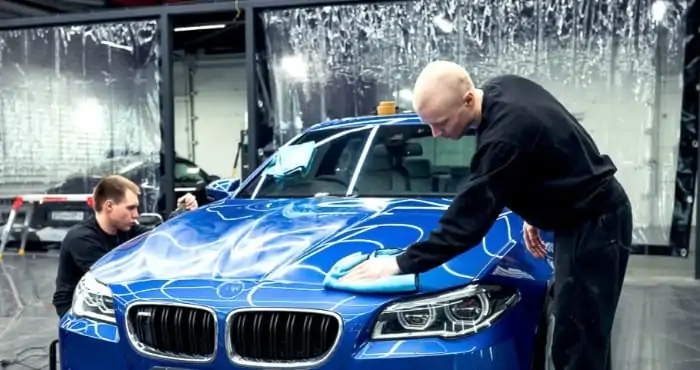
Another property of liquid glass is that dust does not collect so much on it. Especially in the summer, this is noticeable when the car is in the open parking lot. Also, the film protects against minor mechanical impact, for example, when the owner of a car sweeps dust off a car or drives near a hedge.
In order for the protective layer to last longer, it is necessary to wash the car without using auto chemical goods, brushes and rags - just wash off the dust with water. The maximum effect is achieved only by observing the polishing technology.
In rainy weather, droplets of water randomly slide off the car, treated with autoceramics, and they do not need to be wiped so that spots do not form after drying. Cars are easier to wash, as dirt adheres to gloss worse. The color of the paint becomes brighter.
Types of liquid glass
For automotive polishing, forming a durable film, three types of glass are used. They are based on:
- Potassium. A feature of this basis is its friability, because of which the material is able to absorb moisture.
- Sodium. In addition to low hygroscopicity, the material has refractory properties. It will not save from fire, but it protects layers of paintwork from infrared rays.
- Lithium. Such materials as auto cosmetics are used extremely rarely. They play the role of a temperature controller, so the main application is the manufacture of coatings for electrodes.
The best option is sodium-based waterglass. More expensive products in their composition have different combinations of bases, due to which some characteristics of the product change.
Manufacturers Tour
In the modern market of car cosmetics, there is a wide variety of polishes, which are called liquid glass. Among them there are noteworthy remedies, but you can often find fake. Although such options are also liquid glass, the lack of experience in production affects the quality of products, so it is better to opt for those companies that have established themselves as quality products.
The leading brands among manufacturers specializing in the manufacture of high-quality liquid glass for automobiles are the following brands.
Wilson silane
The Japanese manufacturer is the first in the list, as chemists from this country were the first to develop this tool for polishing bodies, therefore they have more experience than other brands. In the market of car cosmetics, products of Wilson Silane are more often found.
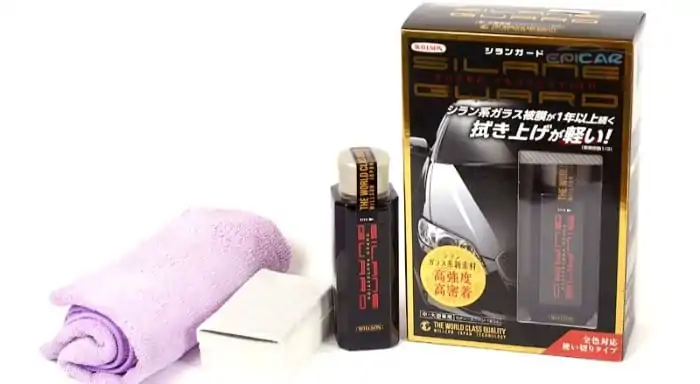
To distinguish an original from a fake, it is worth paying attention to:
- Cost. The original will cost more than analogues of another production. The price can be compared with the information on the company's website. If a store sells goods at a "hot" cost, then most likely it is a fake. An exception may be a sale related to the liquidation of a store. In this case, the cost of all categories of goods will be reduced.
- Packaging. On the box with original products always in several places printed company label (Wilson in red letters on a white background). The name “Guard” is always present in the product name.
- Complete set. In addition to the liquid bottle, the package must contain microfiber, sponge, glove and instruction manual (in Japanese).
Bull Zone
A South Korean company sells no less high-quality products than the previous manufacturer. The bottle is equipped with a spray, which facilitates the process of applying fluid to the body.
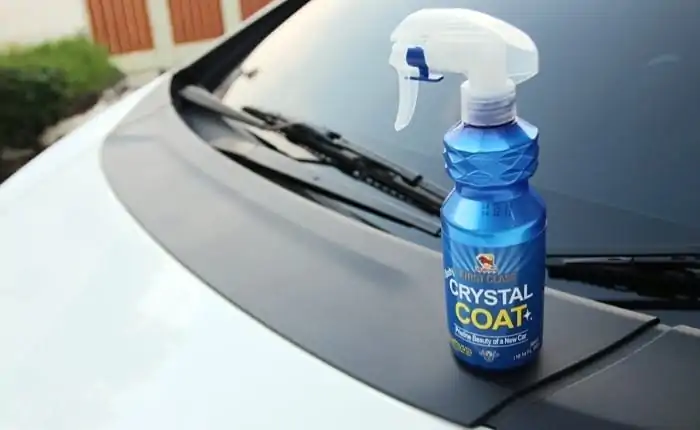
The tool can be applied in several layers with an interval of a month. This creates a thicker film. The protective layer prevents burnout of the base layer of paint. The product is sold in containers of 300 lm.
Mothers
The products of this American company are no less popular than the Japanese counterpart. In the product catalog there is a wide variety of products for cosmetic car care.
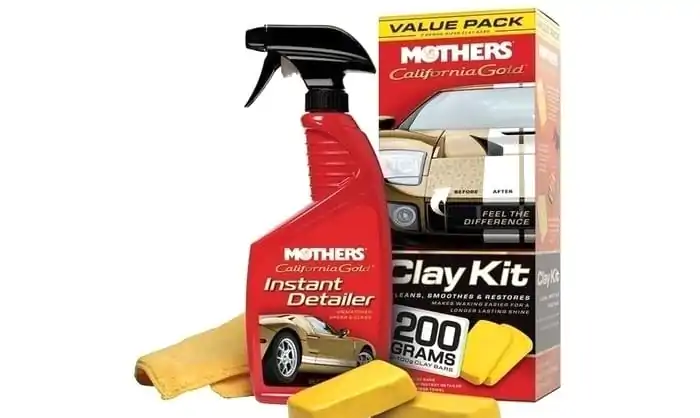
Using different categories of polishing materials can give better results. For example, you can first apply Micro-Polishing Glaze (also called glaze) and then Pure Brazilian Carnauba Wax (wax polish). Some users even note a change in the color of the car.
Sonax
Another well-known brand specializing in the production of all kinds of car care products. The goods of the German manufacturer, like the previous ones, are not cheap.
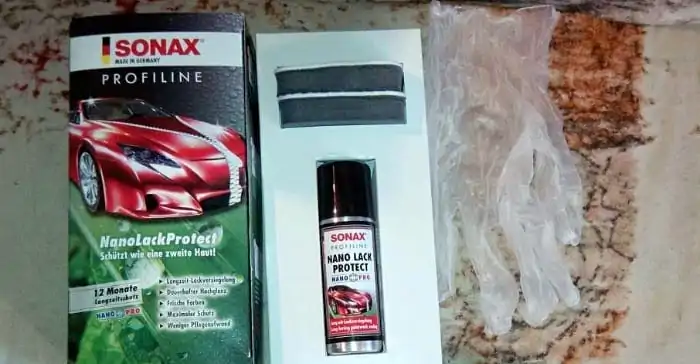
Compared to wax polishes, this solution lasts longer on the surface, however, according to some customers, it is worse (than more expensive counterparts) to mask scratches. In view of this, before applying the product, it is necessary to polish the scratched places with abrasive pastes. How this procedure is performed is described. here.
Most often, they try to fake Wilson Silane products, since they are much more expensive than similar products. Much less often you can find fake German or American manufacturers.
HKC Ceramic Coating
Estonian manufacturer's products are classified as professional materials. Ceramic Coating fluid is well distributed over the surface. According to the manufacturer, 50 milliliters is enough for two treatments.
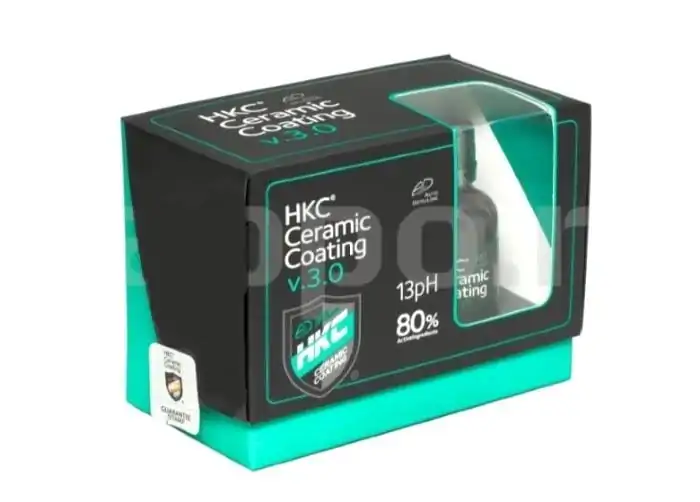
The film does not lose its strength up to 80 sinks. Particularly liked the tool for some owners of cars with a touch of metallic paint. The car began to look original due to the creation of a prism effect.
Soft99 Glass Coating H-7
The goods of the Japanese manufacturer are distinguished by a single-component composition. Thanks to this, it can be stored for a long time. Suitable for processing plastic, paintwork, metal and chrome parts.
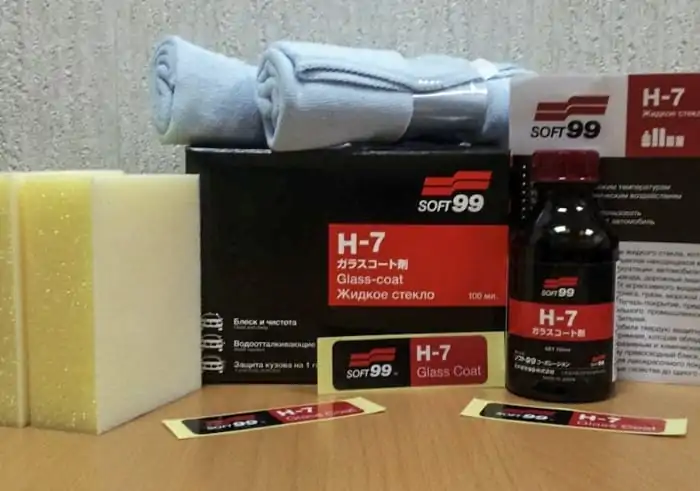
When applying, avoid contact with rubber products. The components that make up it can damage them. 50 ml should be enough to polish a medium-sized car. solution, although the instructions indicate the number 30.
Ceramic Pro 9H
This tool belongs to the category of "Premium". It is considered one of the most expensive polishes. It is practically impossible to find it in stores, because due to the high cost and complexity of the work, it is used only in professional ateliers.
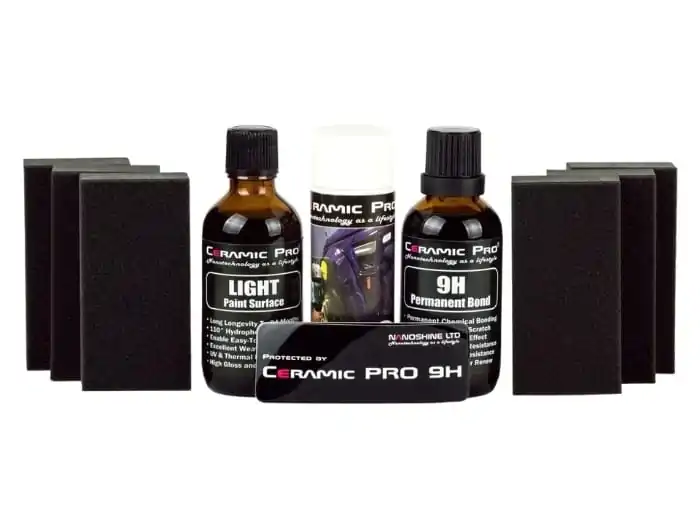
Experts do not recommend using this tool if there is no experience in treating the body with liquid glass. If the master even deviates slightly from the manufacturer's manual, he may spoil the paintwork.
The effect of this product is a durable film of up to 100 sinks. True, 50ml. (the volume of goods sold) is enough for only one treatment, and then in three layers. Periodically (at least 9 months), the upper ball must be refreshed so that the coating does not lose its properties.
How to apply liquid glass to a car?
In addition to processing the bodywork, autoglass can be applied to any elements of the machine that are susceptible to rapid pollution. For example, the product can be applied to the front bumper and windshield, so that crashed on them and dried flies were easier to wash.
Although the processing of the machine is not complicated, and you can do it yourself to feel the effect, you must strictly adhere to the technology specified by the manufacturer. Before you begin, it is worth remembering the basic rules.
Basic rules for applying liquid glass
These rules are considered basic, and they relate to the use of all varieties of water glass. These requirements include:
- Processing should be carried out in a closed and well-ventilated area (not dusty), but in no case outside. Initially, the product is sticky, so even small debris (hair, pile, fluff, dust, etc.) will leave an ugly mark.

- Before applying the product, the machine must be washed and dried. The surface should also be degreased.
- Do not apply liquid at sub-zero temperatures. Boxing should be warmer +15 degrees, and humidity - no higher than 50 percent.
- The car body must be cool.
- Some mistakenly believe that liquid ceramics will fill all the scratches and they will not be visible. In practice, sometimes the opposite happens - a large defect is not eliminated, but becomes more expressive. Considering that the product masks minor scratches and scuffs, the body should be polished with abrasive paste to eliminate “problematic” areas.

- If a spray gun is used, it is necessary to cover the surface with a small layer, otherwise it may drain and spoil the appearance of the coating.
- Some varnishes are prepared by mixing the ingredients. In this case, you need to be careful about the recommendations indicated in the instructions for use of the substance.
- Since this is still a chemical agent, the worker must protect his skin, mucous membranes and respiratory tract from contact with the reagent.
What effect
If the procedure is performed correctly, the tool will firmly fix on the paintwork. Transparent film will create a mirror effect on the treated surface. The car is getting new.
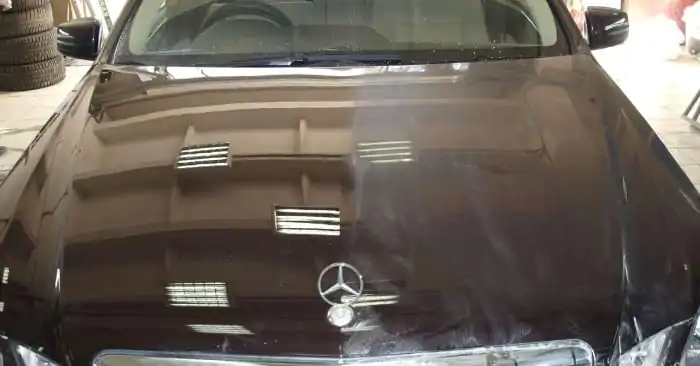
In addition to giving the car aesthetics, this tool protects the body from the aggressive effects of certain reagents that are added to the sand to sprinkle the road in winter. Sometimes, to save money, some companies use technical salt, so every car needs such protection.
Some motorists apply the product not only to the body, but also to the glass. Since the coating has a water-repellent property, small drops do not linger on the windshield, but flow off. Due to this effect, there is no need to turn on the wipers to remove droplets that distract from driving. If you try to remove them on an almost dry glass, then the sand that has fallen between the rubber of the janitor and the windshield can scratch the surface.
Do not assume that the use of liquid glass will replace the painting of the wiped area. This is just a cosmetic product that only creates a protective film. The solutions do not contain dyes, therefore, to eliminate burnt or scratched areas, a deeper body treatment should be used, which restores the damaged layers of the paintwork.
How much does it cost to cover a car with liquid glass
A little about the price of polishing with liquid glass. The first thing motorists think about when determining whether to process a car with this polish is how much auto glass costs. In fact, this is only one cost item.
Depending on the brand, the bottle will have to pay from 35 to 360 dollars. For a small car, usually 50-70 milliliters is enough (depending on the composition and fluidity of the material). If processed parquet SUV or minivan, then you should expect twice as much flow.
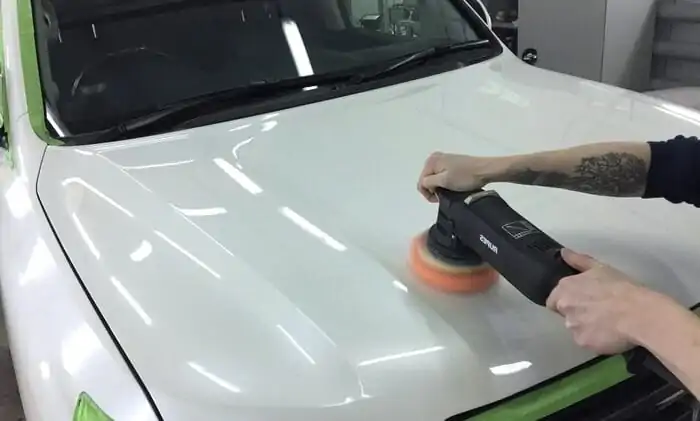
In addition to liquid auto-glass, you will need:
- shampoo to wash the car (price about 5 cu);
- cleaner, if there are stubborn stains (cost no more than $ 15);
- a degreaser to remove the greasy film from the paintwork (not more than 3 dollars);
- if the car is old, then it will be necessary to remove chips and deep scratches (abrasive polishing will cost about $ 45).
As you can see, in some cases, to process the machine with liquid glass, you need to spend a lot more than pay for the tool itself. If the procedure will be performed by masters in the salon, then you should expect that they will take as much for the work as the material costs.
Self-applying liquid glass on the machine
If you decide to do the work yourself, a novice in this regard should choose semi-professional material. Firstly, it will cost an order of magnitude cheaper compared to a professional counterpart. Secondly, it’s easier to work with such tools.
The next thing you need to pay attention to is the application technique. Each tool differs from the others in composition, and, therefore, in the technology of the work. All the details of the procedure are indicated in the manufacturer's instructions.
After preparation (points above a little) you should take care of good lighting. This will make it possible to properly polish the surface of the car and notice the flaws.
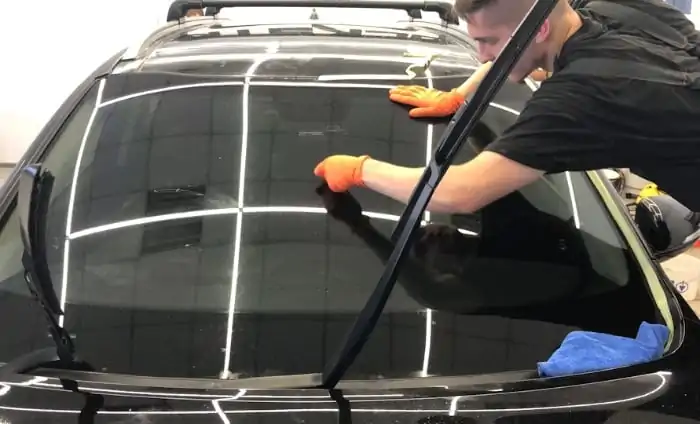
The next step is to close the elements that will not be processed (windows, door handles, wheels, lights). Next, the previous film is removed if the body has been processed by auto glass earlier.
Now you can start applying the substance. The procedure itself is described in detail in the instructions, but it must be performed in compliance with the following rules:
- before applying the substance to the main elements of the body, you should practice in a small area;
- polish is applied gradually, each part must be processed separately;
- it is necessary to distribute the product with a cloth that does not leave a pile after contact with sticky substances (this is microfiber or a sponge made of finely porous foam rubber);
- after applying the substance, the layer should dry;
- after 2-3 minutes (depending on the manufacturer’s recommendations), the layer is polished with a soft nozzle on a grinder set at medium speed (in the budget version it is an electric drill with the appropriate number of revolutions).
It is worth noting that polishing the body with liquid glass is a process that will take a lot of time. After applying the first layer, the car should dry out for six hours. The second ball should be allocated about 10 hours. The third layer should dry during the same period.
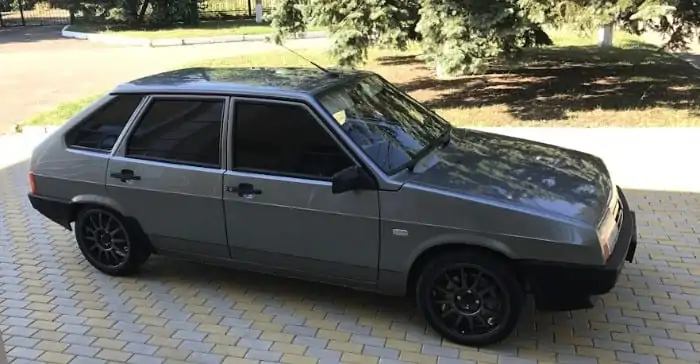
After application, it is not recommended to leave the box so that the product dries and forms a strong film. After 12 hours, you can drive freely. The only thing is that experts do not recommend washing a car for two weeks, and subsequently only use a contactless sink.
Liquid glass for cars: disadvantages and advantages
Any car care product has its own advantages and disadvantages, so each motorist needs to determine for himself what he is willing to compromise on.
The advantages of car processing in this category of car care products include:
- durable film that protects against moisture and ultraviolet exposure;
- the product restores shine, like a new car, in some cases, make the color of the car more saturated;
- glass provides protection for paintwork;
- dust is accumulated less on the machine after application (some products have antistatic effects);
- the protective layer does not wash off much longer than after applying wax;

- after crystallization is not afraid of temperature changes;
- protects metal elements and paintwork from aggressive reagents used to sprinkle roads in winter
Among the disadvantages of autoceramics are the following:
- due to the rapid crystallization of the substance, it is quite difficult for a beginner to make an independent high-quality body treatment;

- if the shortcomings of conventional polishing can be eliminated immediately, then nanoceramics of mistakes "do not forgive." You have to wait a long time for the layer to develop its life, or to remove the film and redo everything again, which will fly into a pretty penny;
- Compared to wax and silicone polishes, autoglass is more expensive;
- the top layer should be periodically updated to extend the life of the protective ball, and this is also an additional waste;
- to perform the procedure, you need to create almost ideal conditions - you have to look for a suitable garage;

- although the protective layer is heat-resistant, it is sensitive to sudden changes in temperature and can crack in severe frost. If winters in the region are severe, then it is better to use other types of polishes;
- low ductility. In contrast to paint and varnish, hard glass forms chips during metal deformation. A similar problem may occur as a result of a stone hitting a car body.
Summing up, it should be noted that this tool will be useful for those who seek to bring the outer gloss of their car to the ideal.
These funds do not belong to the category of mandatory materials that a motorist should use. Rather, liquid glass is one of many products for car care. Given this, each car owner for himself determines how to care for his vehicle.
Questions and answers:
How to properly apply liquid glass to a car? The room should be warm, dry, not dusty and should not be exposed to direct sunlight. The surface to be treated must be cold.
How long does liquid glass last? It depends on the manufacturer. Modern formulations can last up to 3 years, but in aggressive conditions, the coating often lasts no longer than a year.
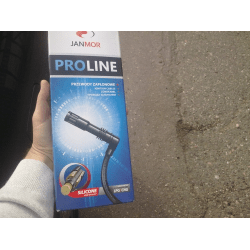
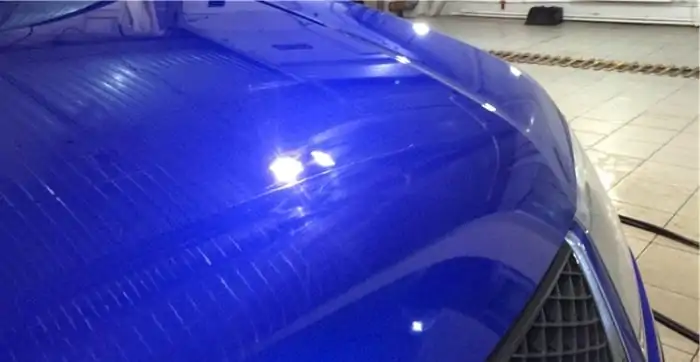
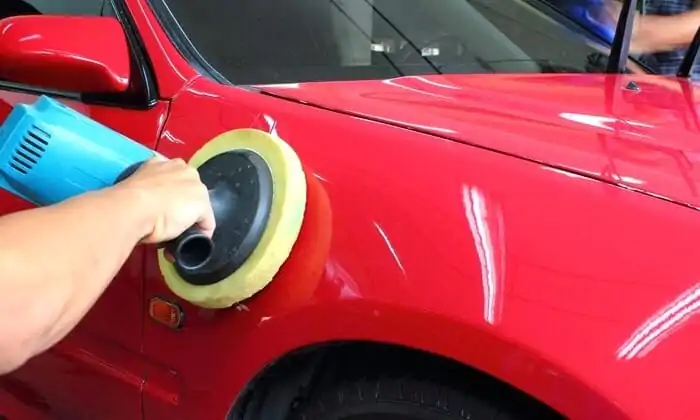
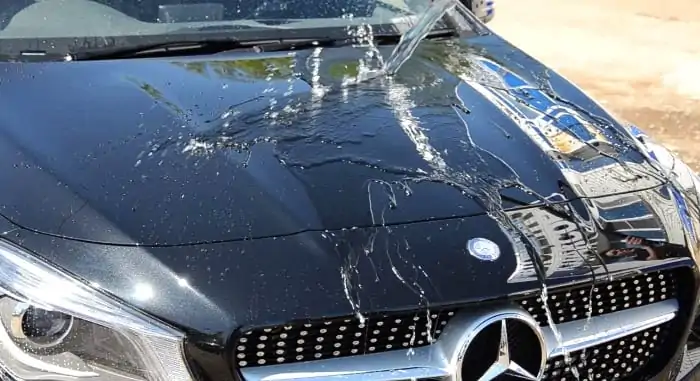
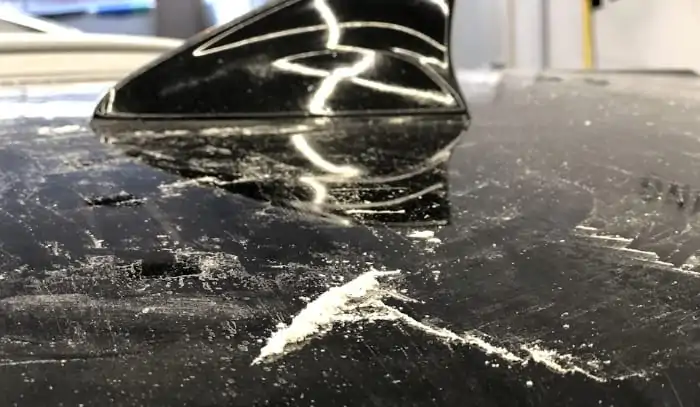
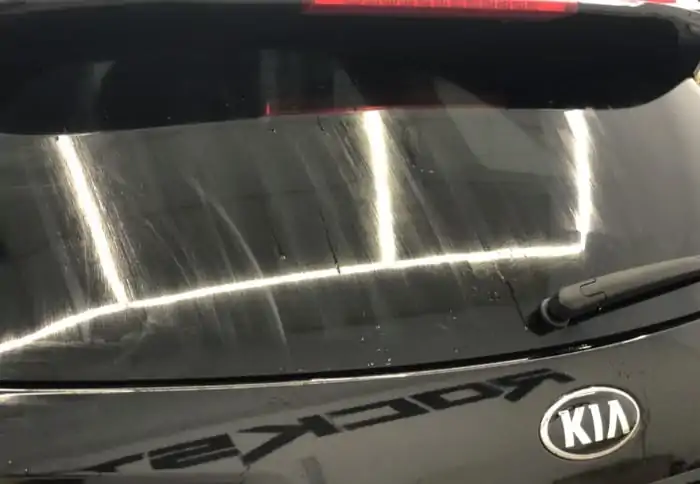
3 comment
anonym
And here
Miguel
Excellent report very good
Rachel
Is it advisable to apply liquid glass to a new vehicle?